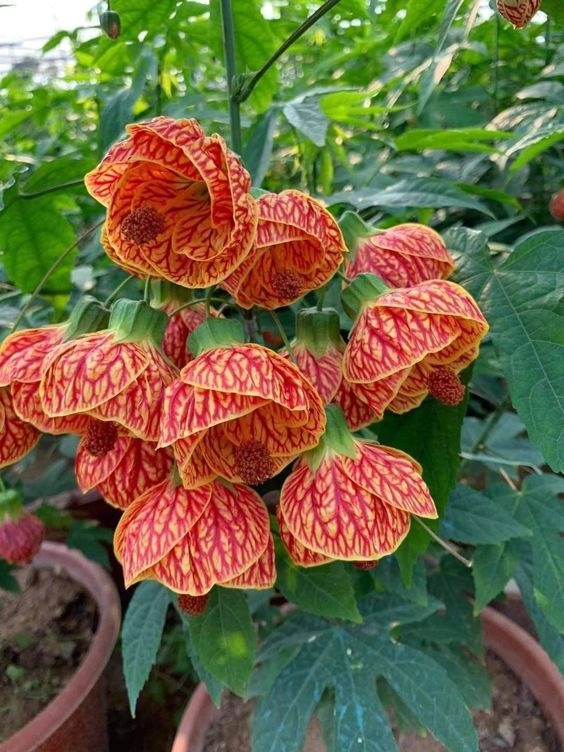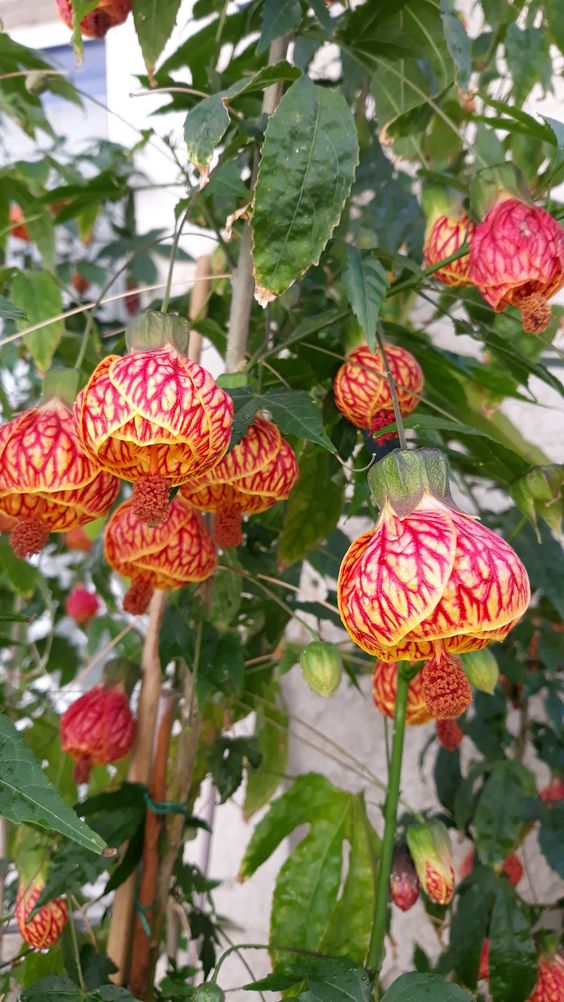Description
Chinese lantern, also known as flowering maple (Abutilon ×hybridum), is planted outdoors in warm regions and grown in greenhouses elsewhere. It is a fast-growing shrub with attractive hanging flowers. Another species, sometimes known as redvein flowering maple (A. pictum), is a handsome variegated-leaf shrub reaching a height of 4.5 metres (15 feet) and is grown as a houseplant. The trailing abutilon (A. megapotamicum), often grown as a hanging plant, is noted for its nodding, yellowish orange, closed flowers.

How to grow Chinese Lantern (Abutilon)
Choose a sunny or partly shaded spot in the garden and prepare the planting area well by digging in Yates Dynamic Lifter Organic Plant Food.
Dig a hole in the prepared area, place the plant in the bottom of the planting hole, gently backfill around the plant’s root ball with soil then water well.
Reapply Yates Dynamic Lifter Organic Plant Food around the root zone every 8 weeks from spring until mid autumn to promote good soil health.
Mulch with an organic mulch, such as bark chips, woodchips or pea straw and water in well.
During times of new leaf growth and flowering, feed each week with Yates Thrive Natural Roses Flowers Organic Based Pelletised Plant Food.

How to care for Chinese Lantern (Abutilon)
1. Light:
Chinese Lanterns prefer bright, indirect light. They can tolerate some morning or evening sun, but avoid intense, direct sunlight, as it may scorch the leaves.
Indoors, place them near a sunny window with filtered light. Outdoors, find a spot with partial shade, especially during the hottest part of the day.
2. Temperature and Humidity:
These plants thrive in moderate temperatures between 60°F to 75°F (15°C to 24°C). They can tolerate slightly cooler temperatures but should be protected from frost.
They prefer moderate to high humidity levels. If the air is dry, misting the leaves or placing a tray with water and pebbles nearby can help increase humidity.

3. Soil:
Use a well-draining, fertile soil mix for Chinese Lanterns. A mix of potting soil, perlite, and sand works well for container-grown plants.
The soil should retain some moisture without becoming waterlogged.
4. Watering:
Water the plant when the top inch of the soil feels dry to the touch. Avoid overwatering, as Chinese Lanterns are susceptible to root rot.
During the growing season (spring and summer), water more frequently, but allow the soil to dry out slightly between waterings. In winter, reduce watering.
5. Fertilization:
Feed the plant with a balanced, water-soluble fertilizer during the growing season, approximately every two to four weeks.
Avoid fertilizing during the winter when the plant's growth slows down.
6. Pruning:
Regular pruning helps maintain a compact and bushy shape and encourages more blooming.
Prune any dead, damaged, or leggy growth. Pinch back the tips of branches to promote branching and more flower production.
7. Repotting:
Chinese Lanterns can be repotted every 1-2 years in the spring if they outgrow their containers.
Use a slightly larger pot with fresh potting mix during repotting.
8. Pests and Diseases:
Keep an eye out for common houseplant pests like aphids, spider mites, and whiteflies. Treat them promptly with insecticidal soap or neem oil.
Ensure good air circulation and avoid overwatering to prevent fungal issues.
9. Propagation:
Chinese Lanterns can be propagated through stem cuttings. Take 4-6 inch cuttings from healthy stems, remove lower leaves, and place them in a well-draining potting mix. Keep the soil consistently moist until new growth appears.
With proper care, Chinese Lantern Abutilon can reward you with its charming lantern-like flowers and lush foliage, making it a delightful addition to your indoor or outdoor garden.